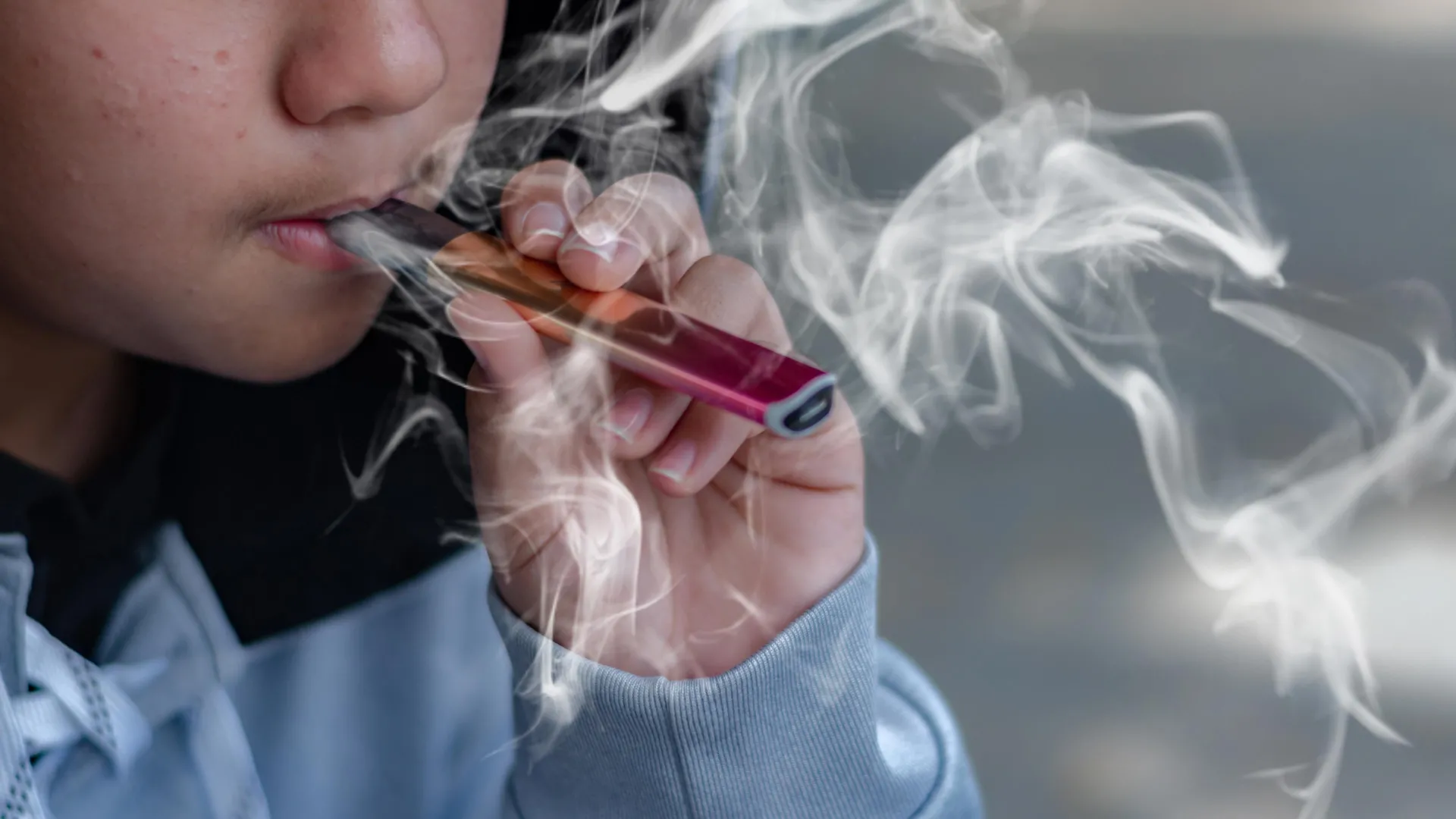Synthetic storm: What’s really in your teen’s vape — and why scientists are alarmed
A study in the American Journal of Preventive Medicine calls for public health policies to protect teenagers from vaping’s long-term harm.
- Date:
- July 1, 2025
- Source:
- Elsevier
- Summary:
- Teen vaping is changing fast — and not in a good way. A large national study found that more adolescents are vaping THC, CBD, and especially synthetic cannabinoids, which are often unregulated and far more dangerous. Even more troubling, many teens don’t know what’s in their vape pens at all. Researchers also found that girls are now more likely than boys to vape these substances. As these mysterious and risky chemicals gain popularity, scientists are sounding the alarm about the urgent need for better education, regulation, and awareness.
- Share:

Novel research has revealed that adolescent vaping of current delta-9-tetrahydrocannabinol (THC), cannabidiol (CBD), and synthetic cannabinoids (SCs) has increased between 2021 and 2023. Also, adolescents are increasingly unsure about the substances they vaped in their e-cigarettes. A new study appearing in the American Journal of Preventive Medicine, published by Elsevier, sheds light on this alarming trend and contributes to informing evidence-based public health policies and harm reduction strategies aimed at protecting youth from the long-term consequences of vaping.
Vaping of substances other than nicotine has become increasingly popular among adolescents in the United States. The current study analyzed national trends of adolescent cannabis vaping from the National Youth Tobacco Survey for 2021, 2022, and 2023, comprising a total of 69,899 US middle and high school students (aged 11 to 18 years).
Lead investigator Jack Chung, BApsych (Hons), National Centre for Youth Substance Use Research, and School of Psychology, Faculty of Health and Behavioural Sciences, The University of Queensland, says, "We found a significant increase in adolescent vaping of THC, CBD, and SCs from 2021 to 2023. THC vaping peaked in 2022 while the use of SCs continued to increase. Adolescents increasingly expressed uncertainty about the substances they were vaping; for example, uncertain respondents answering 'don't know' if they have vaped SCs tripled across the years. Our results also showed that females had a higher prevalence of THC, CBD, and SCs vaping compared to males."
In 2023, it is estimated that 7.4% (or 2.55 million) of US adolescents were currently vaping THC, while 2.9% (or 999,000) were vaping CBD, and 1.8% (or 620,000) were vaping SCs. Individuals who vape cannabis exhibit more mental health symptoms compared to those who use traditional combustion methods of dry herbs and flowers. SCs are typically lab-synthesized to mimic the effects of naturally occurring cannabinoids and often bind more strongly to brain receptors, leading to more intense and unpredictable health consequences.
Mr. Chung remarks, "One of the most unexpected findings from our study was the continued rise in adolescent use of SCs. This trend is particularly alarming given that these substances are often accessed through unregulated, illicit markets, where there are no safety standards or quality controls. The growing popularity of SCs among youth raises serious concerns about potential health risks and highlights the urgent need for targeted public health interventions and regulatory oversight. These synthetic cannabinoids products could potentially be deadly, with many adolescents unknowingly vaping these harmful and synthetic substances."
Co-investigator Gary C.K. Chan, PhD, National Centre for Youth Substance Use Research, Faculty of Health and Behavioural Sciences, The University of Queensland, adds, "We still know very little about the long-term health effects of cannabis vaping, which makes it even more important to understand what's in your vape."
This study is one of the first to track national adolescent vaping prevalence of THC, CBD, and SCs independently, given that most recent studies categorized various cannabinoids vaping under the umbrella term "cannabis vaping," despite their vastly different psychological and health effects.
Mr. Chung concludes, "Experimentation with substance use among teenagers is often driven by peer influence, curiosity, and a desire for social acceptance. This age group may also be increasingly exposed to cannabis-related marketing on social media platforms such as TikTok and YouTube, as well as social media influencers and celebrities. I hope this study will raise awareness of youth cannabis vaping and divert public health resources into better psychoeducation on adolescent vaping, as well as tailored harm reduction interventions to protect our young generations."
Story Source:
Materials provided by Elsevier. Note: Content may be edited for style and length.
Journal Reference:
- Jack Chung BApsych (Hons) 1, Carmen C.W. Lim PhD 1, Daniel Stjepanović PhD 1, Wayne Hall PhD 1 2, Jason P. Connor PhD 1, Gary C.K. Chan PhD 1. Adolescent Cannabis Vaping Trends (2021–2023): Delta-9-Tetrahydrocannabinol, Cannabidiol, and Synthetic Cannabinoids. American Journal of Preventive Medicine, Volume 0, Issue 0, 107655 DOI: 10.1016/j.amepre.2025.107655
Cite This Page: